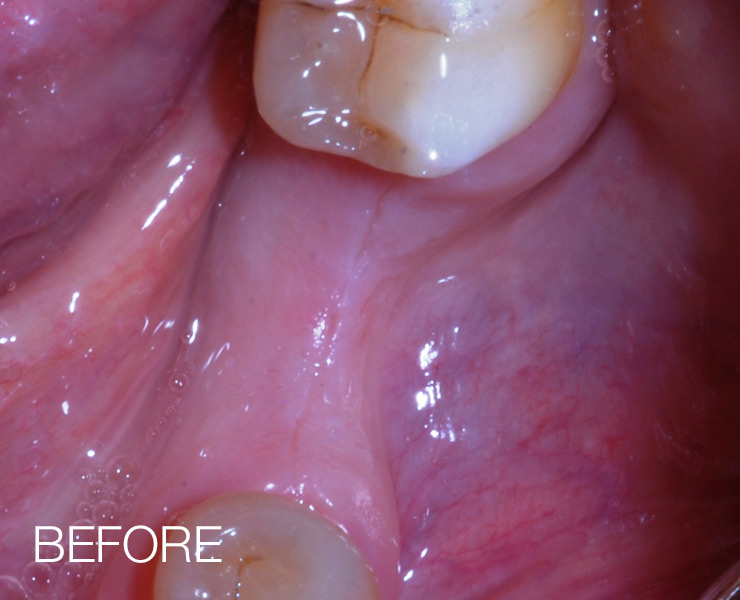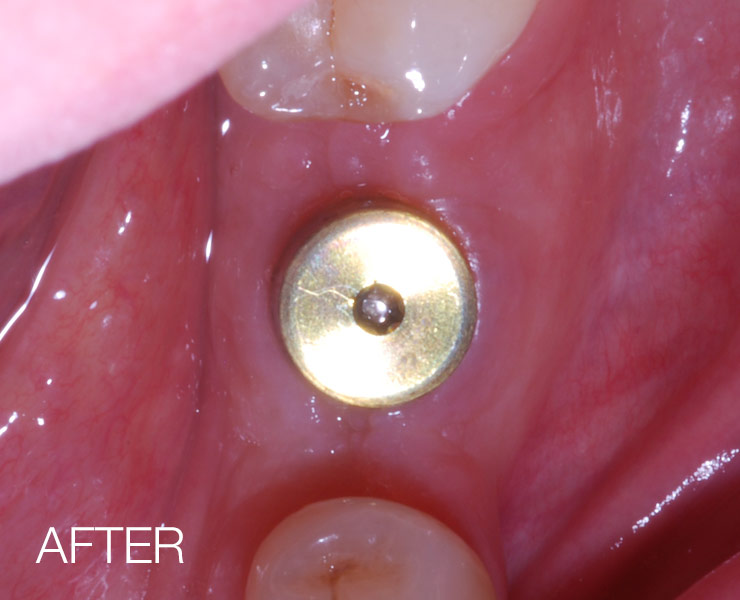- Bone grafts are used to regenerate missing bone and tissues around your natural teeth, implants, or in preparation for dental implant placement.
- When around natural teeth, bone may have been lost due to periodontal disease or trauma, and as a result, may lead to periodontal pocketing (unhealthy environment), gum recession, or increased tooth movement. This procedure may help decrease your level of disease and/or missing bone, and thus help keep your tooth, or teeth longer.
- When bone regeneration is used in preparation for future implants in either your top or bottom jaw, about 6-9 months of healing will be necessary to allow the bone graft to mature as a foundation in order for predictable implant placement.
- Sometimes, and only when indicated, bone grafts are placed at the time of tooth removal, when a dental implant is planned in the future. This is done to preserve what remains after the tooth is removed, and regenerate what may have been lost due to an infection or trauma to the area. This may also be beneficial if implant placement needs to be delayed for logistical reasons.
- When indicated, bone grafting allows for more ideal implant placement both functionally and esthetically. Over the long term, adequate bone width and health also helps keep healthy gums around them, which is the picture frame to your teeth and implants.
Dr. Stasko’s scientific research paper on Sinus Augmentation: Stasko, S. et. al., Sinus Floor Elevation and Implant Placement via the Crestal and Lateral Approach in People Living with HIV/AIDS: Report of Two Cases: Clinical Advances in Periodontics; November 2014, Vol.4, No.4, Pages 217-225.

The first photo shows inadequate bony width in the jaw where the patient would like an implant to replace a missing molar tooth.

The second photo was taken 4 weeks after dental implant placement, which was made possible by first growing bone in the defect. Notice that the jaw is wider now where the dental implant was placed.

